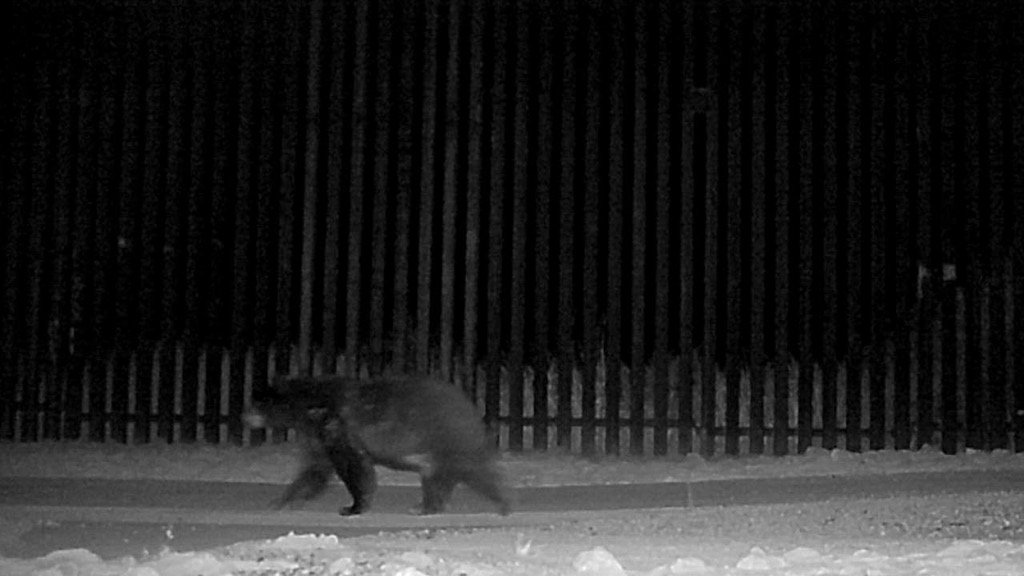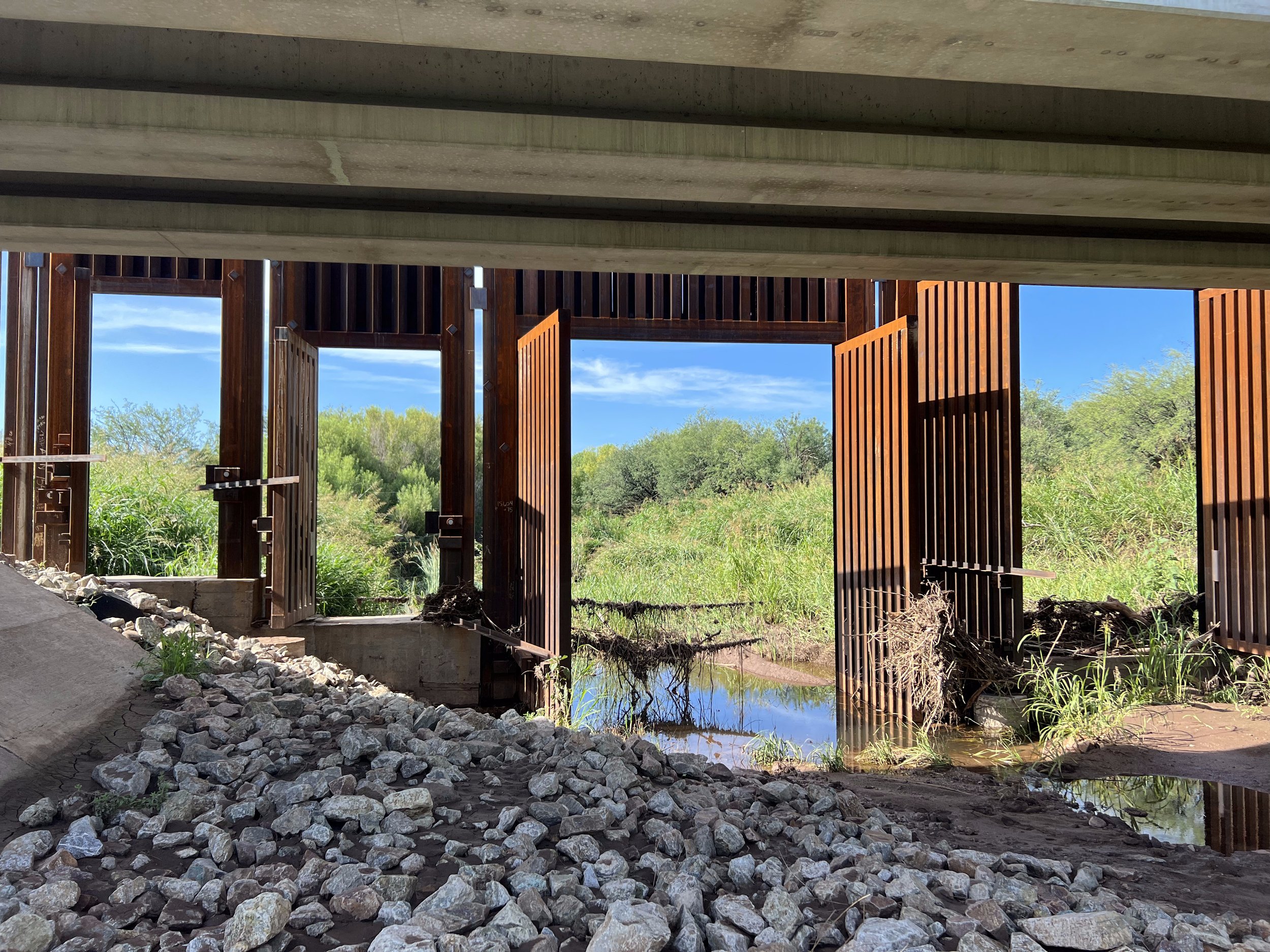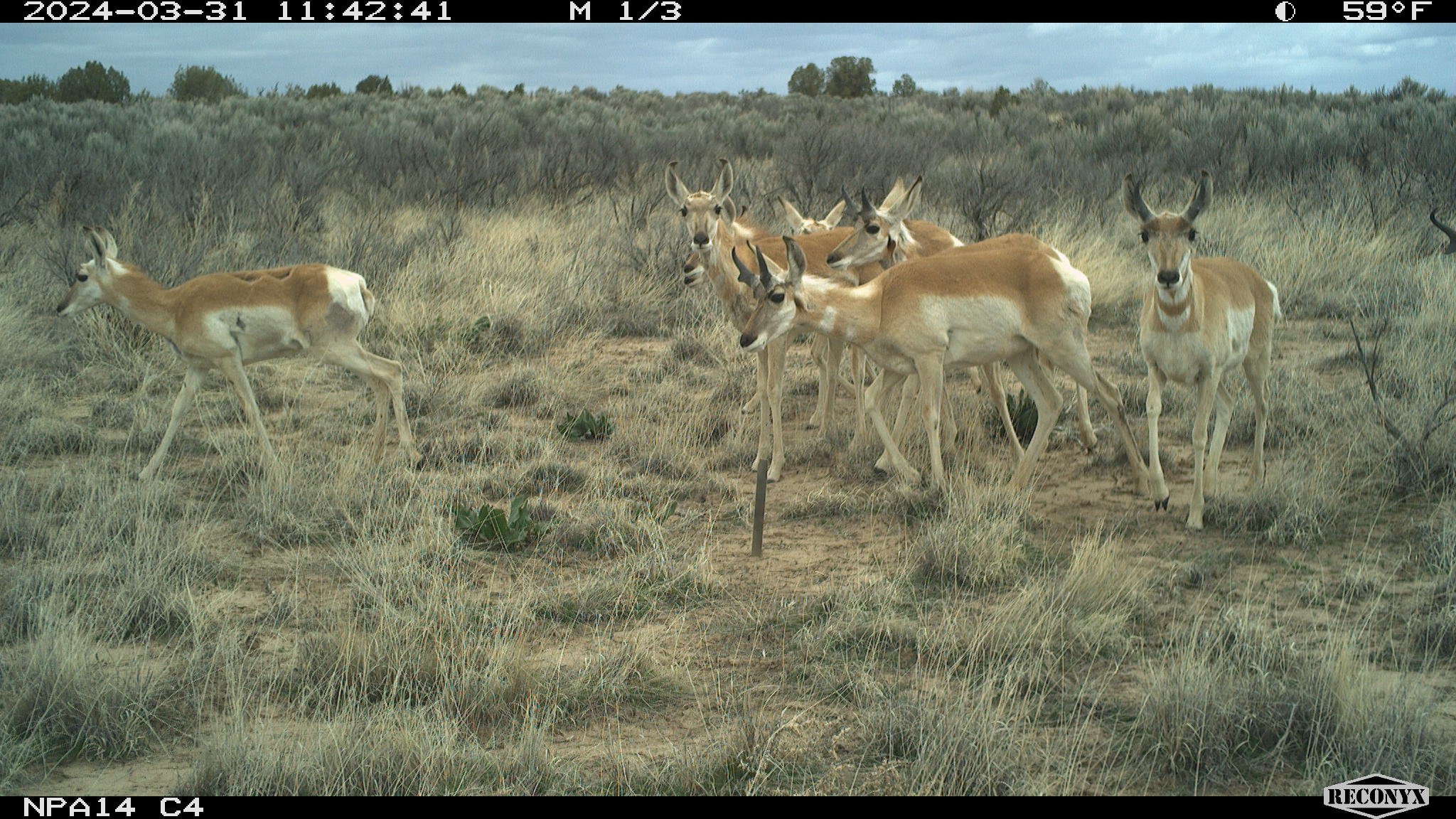CONNECTING
THE WILD
2024 Impact Report
An Urgent Need for a Wilder Future
For 33 years, Wildlands Network has been guided by an urgent vision for a wilder future achieved by connecting vast stretches of lands through Wildways across North America.
Wildways are more than mere pathways. They are essential lifelines that provide wild animals the space to fulfill their unique ecological role, sustaining the intricate web of life.
As I reflect on our journey over the last year, I’m struck by how the powerful connections we’ve forged — much like our Wildways — have created networks of new partners, working together to sustain life throughout North America. I’m deeply grateful for our exceptional team and your generosity that makes it all possible. Together, we are building a future of resilience, connection, and hope.
To celebrate, we’re proud to share recent highlights with you in this 2024 Impact Report, including:
A landmark report showcasing five years of transformative change in government policy supporting wildlife crossings and habitat connectivity, catalyzed by our advocacy for 21 state-level bills and over $58 million in state funding allocations across the U.S. to ensure a future where nature thrives;
Critical modifications to the border wall that now allow mountain lions, javelinas, and other small mammals to move freely — an achievement born from our extensive documentation of the wall’s devastating impact on hundreds of species to lay the foundation for vital wildlife movement across borderlands;
A game-changing matching pledge from one of our funding partners that launched a $25 million initiative to build new road crossings and save the critically endangered red wolf from the brink of extinction.
We’re thrilled to be at the forefront of a vital shift toward a diverse, resilient future — one that supports life for generations of species to come. Your support is the cornerstone of this transformative work.
Thank you for standing with us to preserve the natural heritage that supports all life.
For the love of the wild,
Executive Director
Katie Davis, JD

Why Wildways
Wildways act as interconnected networks of highways for nature, allowing wildlife to move freely between wild spaces. By restoring and protecting these pathways, we rewild entire ecosystems, promote biodiversity and build climate resilience for future generations of wildlife and people.
THIS OUR WAY
WILDWAYS
Bringing the Eastern Wildway to Life
Fishers, bobcats, and black bears are a few of the thousands of wildlife species that live amongst New York’s 20 million human residents. Mammals like these have used the Adirondacks and Appalachians for thousands of years as they roam from Eastern Canada as far south as Georgia to find food, water, mates, and territory they can call home. Stretching from the shores of the Great Lakes to the Atlantic coast, New York plays a critical role in connecting their habitats in the Eastern Wildway. To support biodiversity and climate resilience, New York pledged to protect 30% of its land and water by 2030 (30x30). Now, they must identify the most important areas to preserve and how to protect them.
Our Wildways are just that: a science-backed approach to identifying the most imperative 30-to-50% of land needed for preservation and connectivity across landscapes. Our team brought these priorities to life this year by supporting New York’s Open Space Plan with two submissions: 1) a white paper and a statewide conservation priority map designed to guide 30x30 conservation towards the most valuable parcels for creating a robust, connected network of protected lands and 2) a linkage map and project proposal to connect two large, protected habitat cores: Adirondack Park and Pennsylvania Wilds. This strategic approach to landscape-scale conservation would provide a safe way for species like the fisher and bobcat to move throughout their native ranges in both New York and Pennsylvania.
In addition, we played a key role in assisting sponsors with drafting and promoting the New York Wildlife Crossing Act, which has officially passed the legislature and is awaiting the governor’s signature. We also provided guidance on the Environmental Bond Act (which includes at least $640 million for open space conservation and recreation), 30x30 criteria development, and the State Wildlife Action Plan update, which directly addresses the potential reintroduction of wolves and cougars to New York for the first time.
By connecting our continental Eastern Wildway at the scale of both counties and countries, we’re enhancing habitat connectivity for the diversity of wildlife in New York and beyond.
-
2 new maps detailing the Eastern Wildway for local corridors
Supported 4 new policies advancing New York’s 30x30 goals
“With the Open Space Plan set for public comment in early 2025, and Bond Act funding becoming available in the coming years, we are optimistic that habitat connectivity projects will be funded that support 30x30 and a connected landscape across New York.”
Ed Marx
New York Program Manager
Partnering for Impact
Western New York Land Conservancy
Our partners at the Western New York Land Conservancy took an incredible next step in implementing our Eastern Wildway vision locally with their own analysis and map: the Western New York Wildway. This year, they officially submitted the project to the New York State Open Space Plan after completing an in-depth habitat connectivity study to identify priority cores and corridors.
WILDLIFE
Protecting a Treasured Endangered Species Uniting Mexico and the U.S.
Not so long ago, flocks of thick-billed parrots painted the skies of the southwestern United States with green and red. Today, those sights are just a memory. Only around 2,000 parrots remain in Mexico’s Sierra Madre Occidental, nesting in the last remnants of ancient conifer forests in the state of Chihuahua. The survival of this critically endangered bird is intrinsically tied to these forests — constantly threatened by deforestation and increasingly severe wildfires due to climate change. If the forests disappear, the fate of the thick-billed parrot will be sealed. Conversely, the forests rely on the parrots to disperse seeds and sustain a unique ecology.
We are saving these parrots by supporting the forests’ first line of defense: the communities that care for the mature forests of the Tutuaca Flora and Fauna Protection Area. In this refuge, one of the main nesting sites for the thick-billed parrot, we supported the training, equipping, and funding of a community brigade to manage and prevent wildfires in the core area of the parrot’s preservation zone, within the communities of Tutuaca and Conoachi.
The results are encouraging. During this year’s fire season, the most devastating ever recorded in Mexico, the local brigade responded to three fires that affected a total of 14,999 hectares. Fortunately, the fires did not reach the nesting area thanks to preventive actions taken to remove flammable debris and the swift brigade response. Most promisingly, after years of decline, the number of active thick-billed parrot nests increased from nine in 2023 to 23 in 2024 — more than double — a clear sign that the birds are finding sufficient food and secure environments for breeding in these forests.
-
The number of active thick-billed parrot nests in the project area increased by 2.5x from 2023 to 2024
A better-prepared community brigade, composed of ten individuals, prevented the parrot nesting area from being consumed by three deadly fires in 2024
“This project is an example of how the work of local communities, the efforts of the National Commission of Natural Protected Areas (CONANP), and the support of Wildlands Network have been harmoniously combined to conserve the species and the ecosystem.”
Carlos Castillo
Northwest Mexico Program Co-Director
Partnering for Impact
The Communities of Tutuaca and Conoachi
Without the involvement of the Tutuaca and Conoachi communities, the conservation of these forests — and, consequently, of the thick-billed parrot — would not be possible. They serve as the frontline in combating fires and safeguarding these vital forests.
WILDLIFE
CROSSINGS

Bridging Habitats – And People – To Connect California
In the Sierra Nevada just north of Lake Tahoe, humans constructed a barrier through ancient migration corridors for mule deer, elk, and pronghorn: U.S. 395. Despite rich biodiversity, California has more endangered species than any other state. Why? Habitat loss and fragmentation from deadly obstacles like interstates are major threats to wildlife. Although organizations and government entities work hard to address these risks, their efforts often remain disconnected.
To help wildlife move safely between low plains in the Great Basin and the high Sierra Nevada mountains across U.S. 395, as well as across other divided habitats in California, we use research to inform and support wildlife-friendly policies at the state and local levels. In the past year, we helped secure $16.7 million in grants from the Wildlife Conservation Board to create future crossings at dangerous spots on U.S. 395, I-8, and I-5, where animals are often hit by vehicles.
Our research also covers I-80, the Lake Tahoe Basin, and beyond. Partnering with Pathways for Wildlife, we use camera trap images and GIS models to pinpoint connectivity hotspots where most wildlife are traveling and colliding with cars to identify high-priority crossings. In 2024, Caltrans used our research to identify five culverts and bridges that needed improvements to guide and make space for large mammals and to publish 32 additional priority wildlife crossing projects in compliance with The Safe Roads & Wildlife Protection Act, which we co-sponsored in 2022.
Our data supports groundbreaking state-wide policies that we help draft and sponsor, including the Room to Roam Act, which was recently passed. This novel connectivity bill will enhance wildlife movement beyond roads by enabling local governments to improve land-use planning and incorporate critical wildlife corridors.
With our research and legal guidance, California is connecting the Pacific Wildway, one wildlife photo, meeting, and bill at a time.
-
$16.7 million in grants secured for wildlife crossings along US 395, I8, and I5
5 culverts and underpasses upgraded to aid seasonal wildlife movement on U.S. 395 based on our data
32 new priority wildlife crossing sites identified throughout California by Caltrans with our research
Helped implement, draft, and sponsor 2 novel connectivity bills in California
4 active research projects to site and advise wildlife crossing construction and habitat protections across northern California
“While policy development is a multi-year process, it has been exciting to see our work on The Safe Roads & Wildlife Protection Act transforming California's landscape this year. With Caltrans already implementing our research, habitat connectivity is becoming a fundamental aspect of planning efforts.”
Mari Galloway, JD
California Program Director
Partnering for Impact
Pathways for Wildlife
In addition to being our go-to partner for camera and roadkill data collection, Pathways for Wildlife is a collaborator and a thought partner, helping to brainstorm ecoregional connectivity and working in-step to apply conservation biology.
BORDER
WALL
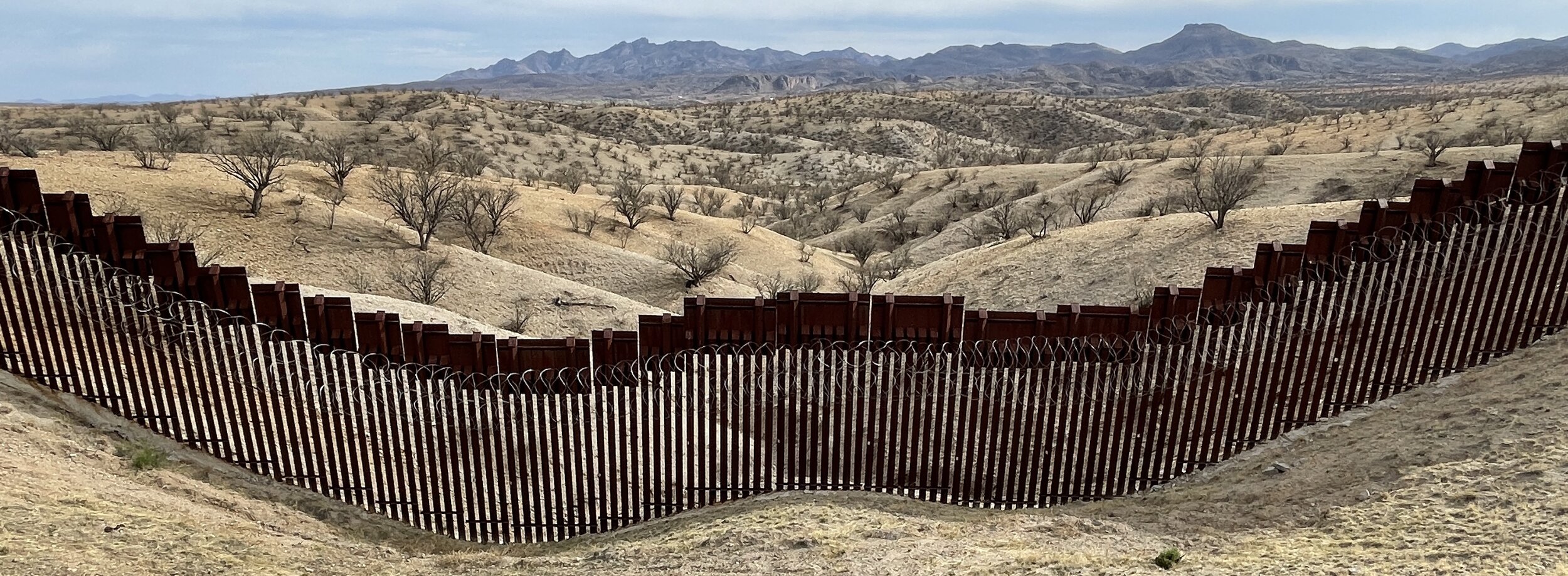
Tracking Wildlife Movement in a Divided Landscape
The 700-mile border wall between the U.S. and Mexico disrupts crucial habitats and corridors for species like the black bear, pronghorn, jaguar, ocelot, and Mexican gray wolf. Despite the wall’s significant impact, the federal government waived key environmental assessments — including those normally required under the National Environmental Policy Act, Endangered Species Act, and Wilderness Protection Act — to speed up construction, and there is surprisingly little published research on the border wall’s impacts on wildlife movements.
We set out to document the urgency of this threat to wildlife. This year, our team completed a data-based assessment of the wall’s impacts on wildlife movement at the San Bernardino National Wildlife Refuge in Arizona. After assessing three years of data, the study found that small wildlife passages (for which we advocated) are actively being used by many species, including the javelina, skunk, raccoon, fox, bobcat, and, amazingly, female mountain lions and their cubs. However, our data show that deer, pronghorn, and black bear are not able to pass. We expect this groundbreaking research to be published next year.
In another major victory, our GIS and modeling work identified priority locations for new large wildlife passages along the wall that are essential for all mammal species. In 2024, the U.S. Department of Justice and Department of Homeland Security accepted our recommendations and are proceeding with these additions.
As a result, we are evaluating four newly established large wildlife openings along the longest stretch of the wall. Our ongoing studies aim to determine how these passages facilitate wildlife movement and support mammal migration across this critical boundary in the Western Wildway. The data we collect will play a key role in shaping future conservation efforts and ensuring that wildlife populations remain connected across the U.S.-Mexico border.
-
26 wildlife openings on the border wall studied to date
11,000+ photos and videos of wildlife captured along border wall
84 species of mammals, birds, and reptiles identified at San Bernardino
570 miles of border wall mapped
“Last month, I visited the border in New Mexico and was elated to learn that the large wildlife openings and floodgates were open. It was gratifying to see the work I did over the last few years on the settlement agreement with the Department of Homeland Security finally paid off. I hope we can see some wildlife using the openings!”
Myles Traphagen
Borderlands Program Coordinator
Partnering for Impact
Sky Island Alliance on the San Bernardino National Wildlife Refuge
We collaborated with our long-time regional partner Sky Island Alliance on the San Bernardino National Wildlife Refuge border monitoring program, which has been an exciting and fruitful project yielding significant data on wildlife-border-wall interactions. Together, we are able to significantly expand our understanding of wildlife and act to preserve connectivity across the borderlands region.
SCIENCE
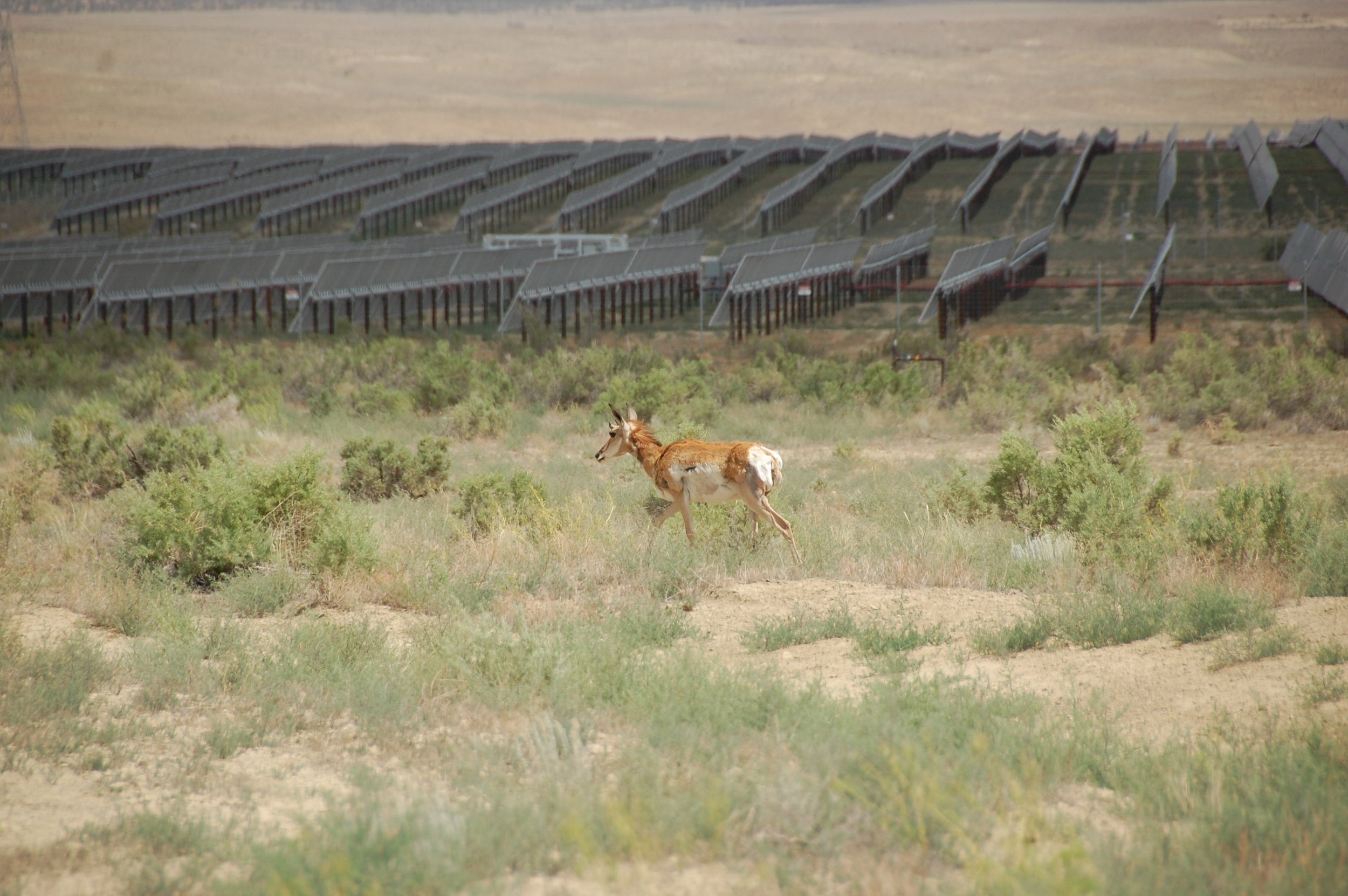
Protecting Wildlife Movement From Solar Energy's Shadow
As utility-scale solar energy (USSE) rapidly advances across North America, we are confronted with a critical dilemma: this growth reduces habitat and potentially disrupts important movement for wildlife. Compounding the issue, regulators, developers, and wildlife managers lack the vital data needed to mitigate impacts and protect these species.
To address this gap, our team is conducting a groundbreaking study on the movement of pronghorn and other wildlife before and after solar development in the Four Corners region where Arizona, New Mexico, Colorado, and Utah meet. Starting in the fall of 2023, we began noninvasive sampling with drones, visual, track and sign surveys, as well as 100 remote cameras. In March 2024, we deployed GPS collars on 60 pronghorns to gain deeper insights into their movements, which we will use to precisely quantify how they respond to solar energy developments.
We are comparing the collar data to our noninvasive survey methods to provide a replicable model for tracking and mitigating the effects of USSE for wildlife without the need to collar animals. This data will also enable us to create innovative habitat modeling tools that could guide solar siting, assess long-term impacts, and improve wildlife management in the Four Corners and similar regions nationwide.
Funded by the U.S. Department of Energy Solar Energy Technologies Office, this project is not only keeping the Western Wildway connected, but is also supporting a wildlife-friendly transition to clean energy. Over the next three years, we will continue capturing data as solar projects unfold in our study areas, ensuring that the lessons learned here contribute to wildlife conservation efforts across the country.
-
60 pronghorns collared for real-time movement data
100 camera traps installed
75,000 photos captured of wildlife
43 species of wildlife identified in the Four Corners region
“We are one of the few entities collecting actual data on how wildlife is interacting with solar facilities before and after construction. We’re excited about the quantity and quality of this data and already we’ve been able to begin advising regulators on mitigation strategies that can help reduce developments’ impact on wildlife.”
Aaron Facka, PhD
Senior Wildlife Biologist, Western Region
Partnering for Impact
Special Thank You to the Ute Mountain Ute Tribe and Navajo Nation
Our project wouldn’t be successful without the Ute Mountain Ute Tribe and Navajo Nation providing us access to their land for research, insights into their unique challenges, perspectives on solar development, and technical support on the ground.
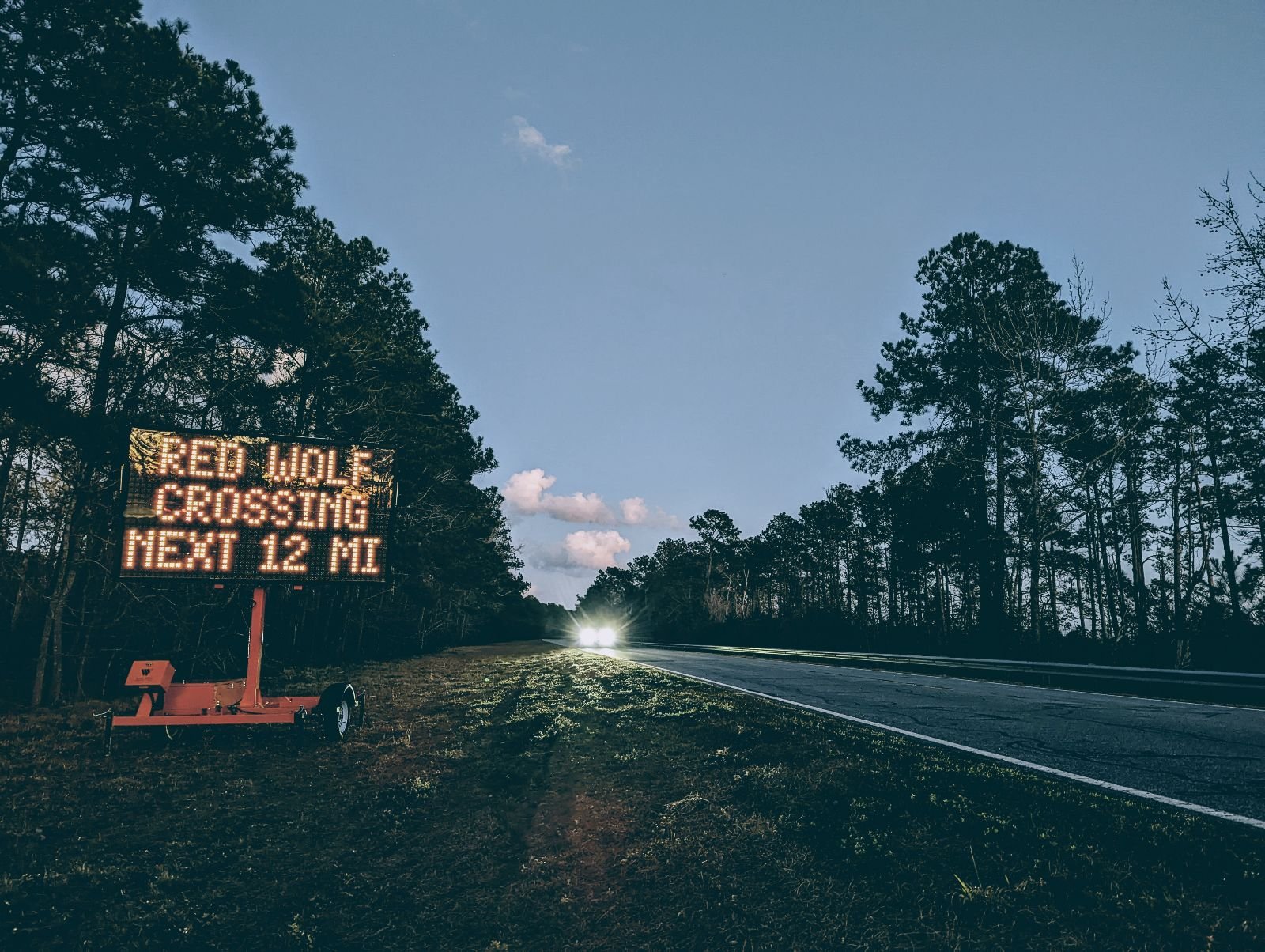
SCIENCE TO
ACTION
Uniting Efforts to Save the Last Wild Red Wolves on Earth
In the last 12 months, cars killed five wild red wolves on Highway 64 in North Carolina – a devastating blow for a species with roughly 20 individuals remaining in the wild. Despite 50 years of recovery efforts, cars and guns – their two deadliest threats – are once again driving them to the brink of extinction. Widespread misconceptions about their ecological role, like the belief that red wolves harm deer populations, have intensified these threats.
After analyzing seven years of camera data, we published a much-needed report in Animal Conservation in late 2023, debunking the myth that red wolves impact deer populations, and proving instead that deer remained abundant at all study sites. More importantly, we revealed that red wolves likely play a crucial role in stabilizing populations of raccoons and other mesopredators, which in turn help protect rare birds whose eggs these mesopredators prey upon.
Recognizing the lack of wildlife crossings along Highway 64 – proven to reduce wildlife-vehicle collisions – in 2024 we launched a public awareness campaign to advocate for red wolf crossings. The momentum grew quickly: shortly after, an anonymous donor pledged to match up to $2 million in private donations toward this initiative. This pledge could enable the North Carolina Department of Transportation to apply for more than $25 million in federal funding for crossings that will benefit red wolves and other species in Alligator River Wildlife Refuge.
Our efforts have resonated across the nation with coverage in the Washington Post, Science Friday, the Associated Press, and other national outlets, amplifying a powerful call for action to protect this critically endangered wolf from extinction.
-
20 or fewer red wolves remain in the wild
#1 most endangered terrestrial vertebrate species in the U.S.
5 red wolves killed by cars in the last 12 months
U.S. 64 through the Alligator River National Wildlife Refuge ranked the #1 priority site for new wildlife crossings in North Carolina
Up to $2 million match pledged for red wolf crossings, potentially unlocking more than $25 million for wildlife crossings
7 years of camera data analyzed for a new report demonstrating red wolves’ ecological value
“We're on the verge of a major breakthrough for red wolf conservation. If we can get wildlife crossings and guide fencing built on U.S. 64, that will flip the switch to allow the red wolf population to grow quickly again. The crossings will also save the lives of thousands of other wildlife each year."
Ron Sutherland, PhD
Chief Scientist
Partnering for Impact
Center for Biological Diversity
When we launched the fundraising effort to help the North Carolina Department of Transportation secure major funding for red wolf wildlife crossings, we needed to raise another $2 million. Fortunately, our friends at the Center for Biological Diversity stepped up to the plate by leveraging their expansive donor network to help raise the necessary capital.
POLICY
Looking Back at Five Years of Habitat Connectivity Policy Success
Over thirty years ago, Wildlands Network’s founding scientists had a vision of a connected North America to ensure wildlife could safely move through our landscapes to find the resources they need to survive and thrive. In 2018, Wildlands Network saw an opportunity to help make that vision a reality, crafting first-of-its kind wildlife corridor legislation and working with lawmakers to pass the legislation in their states. Since then, our efforts have resulted in 21 pieces of state legislation passed to support wildlife crossing and habitat connectivity initiatives, and over $58 million in dedicated state funding to support those initiatives.
After more than 5 years of passing state legislation, this year, Wildlands Network partnered with the National Caucus of Environmental Legislators to analyze all state terrestrial habitat connectivity legislation passed over the last 25 years, identify which policies seemed to be working best upon implementation, and co-release the report, “State of States: A Look at How Far U.S. State Habitat Connectivity Legislation Has Advanced and What is Working.” Some key takeaways from the report included:
80% of all state habitat connectivity legislation has been passed in the last 5 years.
The unprecedented funding made possible by the Bipartisan Infrastructure Law passed in 2021 catalyzed some of the most growth in legislation introduced and passed in the last 25 years.
We are now using this report to help states understand what policies can be tailored to protect their unique landscapes and wildlife. We are also using it to show how critical federal funding has been for catalyzing state action on crossings and connectivity conservation.
“This success story must be shared with federal lawmakers to ensure that these new, innovative federal grant programs are here for the long run.”
Erin Sito, JD
U.S. Public Policy Director
Partnering for Impact
National Caucus of Environmental Legislators
This year, our amazing partner, National Caucus of Environmental Legislators, helped us write and publish our “State of States” report as well as advance a variety of policies that fund wildlife crossings and improve landscape connectivity. They are a critical partner in our efforts to understand trends and insights into federal and state connectivity policy.
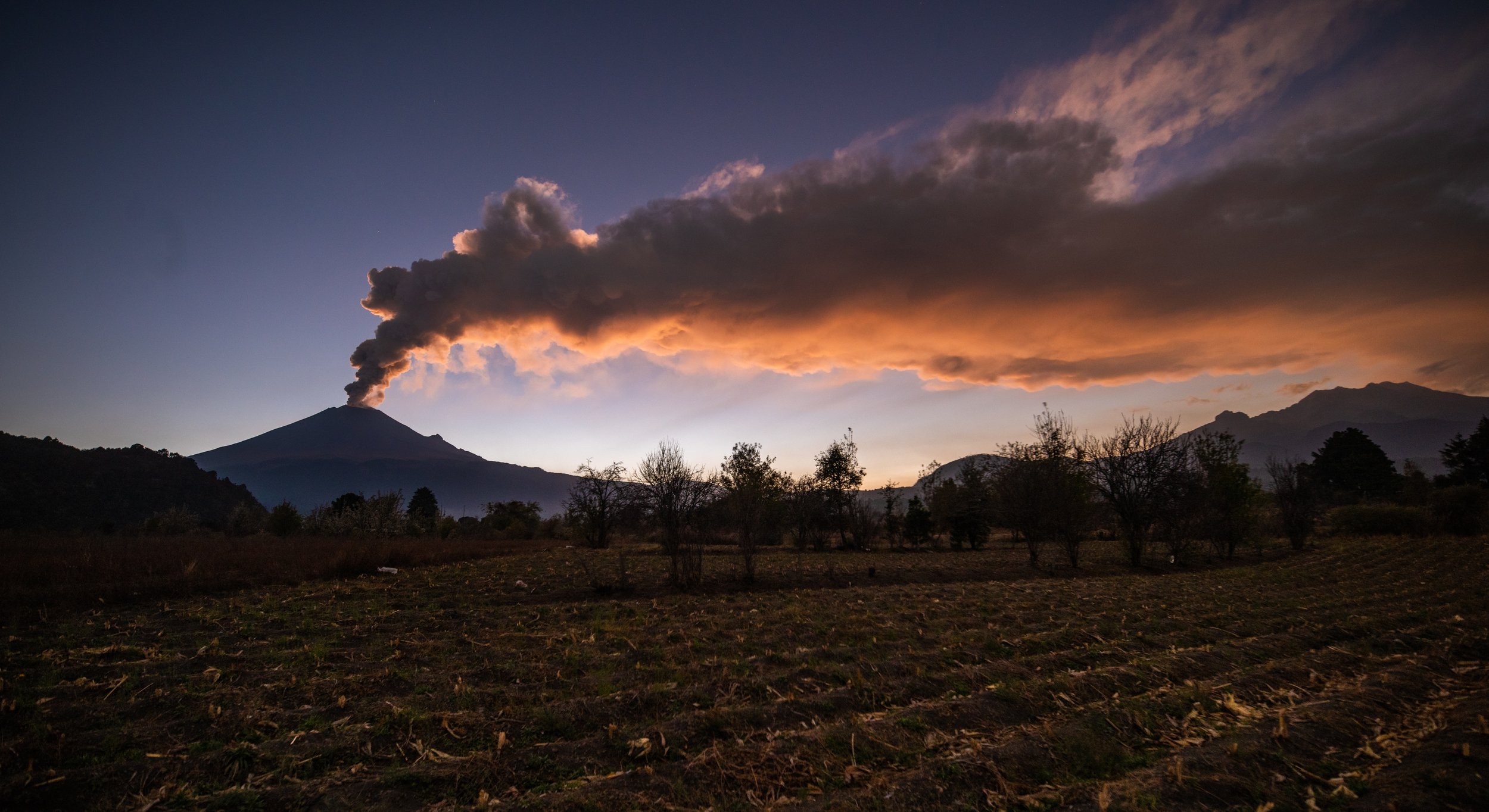
MEXICO
POLICY
Protecting What Matters Amid Budget Cuts and Growing Challenges
Mexico, one of the world’s top five megadiverse countries, finds itself at a critical crossroads: despite its extraordinary natural richness, the country is investing less and less in its preservation, leaving vital areas increasingly vulnerable to the pressures of climate change, deforestation, wildlife trafficking, and unchecked infrastructure expansion.
In response, we are leading the NOSSA (Northwest Civil Society for Environmental Sustainability) coalition, uniting organizations to conduct rigorous research, critical analysis, and advocacy for the effective conservation of natural protected areas (NPAs). In October 2023, NOSSA released “Cuidar lo que importa" (“Protecting What Matters”), a groundbreaking report analyzing the steep budget cuts and looming dangers of underfunding.
With this analysis, we demonstrated that in the administration of President López Obrador (2018-2024), the federal budget for NPAs – the last refuges for countless species – has been reduced by 40.8% compared to the previous administration (2012-2018). By 2024, only 10.7 Mexican pesos (50 cents USD) per hectare are allocated for protection. Thanks to one of our strategic communication campaigns, the report captured widespread public attention, established NOSSA as a key voice in the civil society landscape, and caught the interest of policymakers. Several members of Congress used the report’s findings to push for future NPAs funding.
Early in 2024, NOSSA advocated for income to support NPAs conservation through entrance fees, among other income-generating alternatives. NOSSA’s research also contributed to México Resiliente’s climate emergency action plan presented to Mexico’s presidential candidates.
With unwavering dedication, NOSSA is not just defending Mexico's protected areas – it's shaping a more sustainable and resilient future for the nation’s natural heritage.
-
Over 70 articles, interviews, and mentions in national and international media
By spotlighting the 10.7 pesos per hectare available for NPA protection, we made it a key issue in public debates, urging decision-makers to act
Two congressional resolutions urging the federal government to increase the budget for natural protected areas (NPAs)
One bill presented in the Chamber of Deputies aimed at effectively protecting NPAs
"I am proud that our work at NOSSA is contributing proposals to improve the budget allocated for the protection of biodiversity and our natural heritage. This undoubtedly strengthens the right to a healthy environment in Mexico."
Gina Chacón
Mexico Public Policy Director
Partnering for Impact
NOSSA’S Partners
We’re joined by four leading environmental organizations in this coalition, each renowned for their significant work in Mexico: Causa Natura, Centro de Colaboración Cívica, Defensa Ambiental del Noroeste, and Grupo de Financiamiento Climático para Latinoamérica y el Caribe. Together, we combine our expertise and resources, driving NOSSA’s mission with enhanced strategic impact and efficiency.
2023 FINANCES &
FISCAL SPONSORSHIPS
REVENUE
EXPENSES
We sincerely thank our endowment contributors—Dorene Matney and Gary Estes, and Drs. Anne Baker and Robert Lacy. Your generosity is vital to ensuring the long-term sustainability of our mission!
Our Current Fiscal Sponsorships
The Lobos of the Southwest Coalition is a diverse group of passionate Mexican wolf advocates who champion the recovery of the species across the Southwest United States.
Safe Passage Fund Coalition is a collaboration of six organizations that raise private funding for wildlife-vehicle collision mitigation in the Pigeon River Gorge in the southern Appalachians.
Editorial Direction: Katie Davies, Kim Howes, Tim Noviello
Creative Direction: Tim Noviello
Art Direction: María Fernanda Wray
Artwork & Illustrations: Eduardo Ramón
Editorial Team: Lily Huntsman & María Fernanda Wray
Contributors: Carlos Castillo, Gina Chacón, Mari Galloway, Aaron Facka, Ed Marx, Erin Sito, Ron Sutherland, Myles Traphagen.
Credits:
Photos:
1. Pacing across the river, a black bear hunts for a fish. ©Greg Johnson
2. The thick-billed parrot, the only species of parrot native to the U.S. Southwest. ©Adobe Stock
3. Wildlife crossing on I-395, California. ©Tim Noviello
4. Mountain lion walking through an underpass, California. ©Pathways for Wildlife
5. Border wall in Arizona. ©Myles Traphagen
6. Border wall and bear. ©Sky Island Alliance & Wildlands Network
7. Border wall opening. ©Myles Traphagen
8. Pronghorn in front of a solar farm. ©Kevin Smith
9. Pronghorn posing for a field camera. ©Wildlands Network
10. Red wolves crossing sign, North Carolina. ©Cassia Rivera
11. Red wolves walking in Aligator River Wildlife Refuge, North Carolina. ©Wildlands Network
12. Senator Padilla at Corridors Hearing in Washington, DC. ©Senator Padilla’s Office
13. An iconic landscape of central Mexico, with the smoking Popocatepetl volcano. ©Adobe Stock
14. A spider monkey in the Calakmul Biosphere Reserve, Mexico. ©Adobe Stock

















